There are a lot of reasons why sound bars are taking over home audio, but one of them is increasingly obvious: AV receivers are terrible.
I’ve reviewed a lot of them for CNET, and while receivers are fine for enthusiasts who know what they’re doing, they’re a frustrating experience for everyone else. Most technology gets better over time, but AV receivers seem frozen in amber, with giant chassis, thick inscrutable manuals, and onscreen interfaces that could only generously be called “standard-definition.” They’re embarrassingly backward compared with the rest of your home theater gear, yet they remain a begrudging necessity for those who want something better than a sound bar.
Read: Best AV receivers under $500
AV receivers don’t have to be this bad, but they need to completely reinvent themselves to stay relevant. Here’s where they should start.
1. Make them smaller
While every other device gets slimmer and more compact, AV receivers look the same as they did 10 years ago. They’re massive, unwieldy machines that require tons of shelf space and are a pain to deal with.


Yamaha RX-V475 (left) vs. Marantz NR1603
Sarah Tew/CNET
But we already know they don’t need to be so bulky. Marantz has been making handsome, slimline receivers for several years now that sound great and offer plenty of features. The current “default” design that gets used seems more out of habit (or laziness) rather than any technical limitations.
2. Make them prettier
Even if AV receiver companies can’t (or won’t) make the boxes any smaller, they could at least put some effort into making them look nice. For some reason, all the major companies have decided that a giant, black box is the best look for AV receivers.
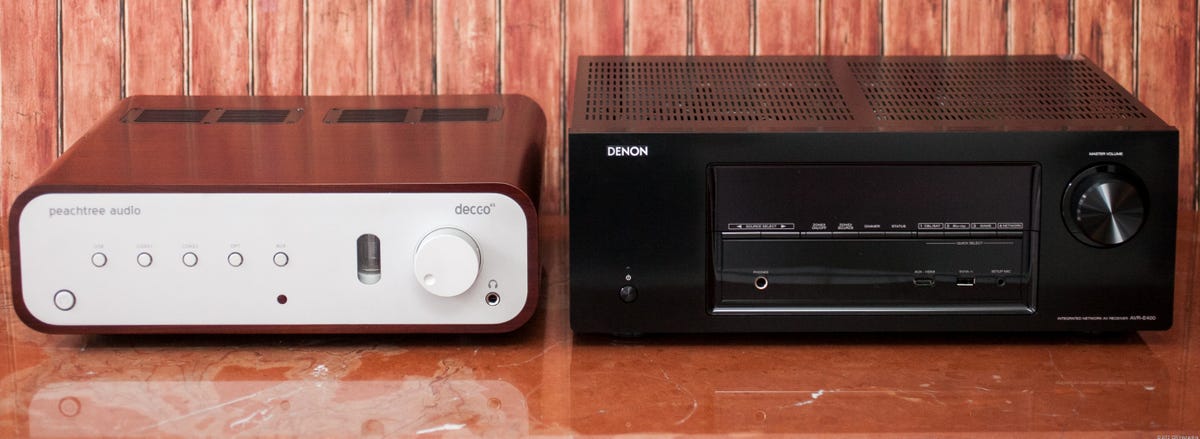

Peachtree Audio Decco65 (left) vs. Denon AVR-E400
Sarah Tew/CNET
There’s no reason an amplifier needs to be so aggressively unsightly. Take Peachtree Audio’s Decco65, which actually looks like something you’d want in your living room, rather than an eyesore you put up with. Granted, the Decco65 at $1,100 is considerably more expensive than your typical midrange AV receiver, but there’s a workable middle ground between gorgeous curved rosewood and a huge block of black metal.
3. Get rid of most features
AV receivers are among the worst sufferers of featuritis. Features keep getting added because they look good on comparison charts, but we end up with receivers that can do everything, but nothing very well.
First to go should be built-in streaming-media features. AV receivers make poor media streamers, with sluggish navigation, lousy user interfaces, and rarely updated firmware. You’re much better off connecting a $100 Roku 3 or Apple TV box for your streaming needs.
Next, cut back on all the unnecessary licensing and sound processing. Dolby Pro Logic IIz — which adds two “height speakers” to a standard 5.1 or 7.1 surround setup — just isn’t worth the hassle. THX certification isn’t required for great sound. Nobody uses cheesy “Jazz Club” or “Concert Hall” modes on an AV receiver. These features and logos keep sticking around, despite the fact that no one really seems to want them.


Some people need all these ports, but you probably don’t.
Sony
Finally, the most radical step is to cut the niche features that are useful in some cases, but I’d bet go unused for the vast majority of buyers. The list is long: analog video upconversion, AM/FM radio tuners, component/composite video inputs, 7.1 channels, and multizone audio. There’s still a place for high-end receivers with the “kitchen sink” approach, but it’s frustrating that mainstream receivers include so much cruft that buyers don’t need.
Strip away all those features and your AV receiver would do two simple things: amplify your speakers and switch between your source devices. And that’s exactly what I use my AV receiver for.
4. Embrace wireless
For all the useless features AV receivers have, they shockingly lack basic wireless connectivity that would actually be useful: Wi-Fi and Bluetooth. Wi-Fi would let you update the firmware and control the receiver via mobile devices, while Bluetooth is the easiest way to wirelessly stream audio from your smartphone or tablet. For many people, mobile devices are the center of their digital music experience, so it’s crazy that most AV receivers don’t support Wi-Fi and Bluetooth natively.
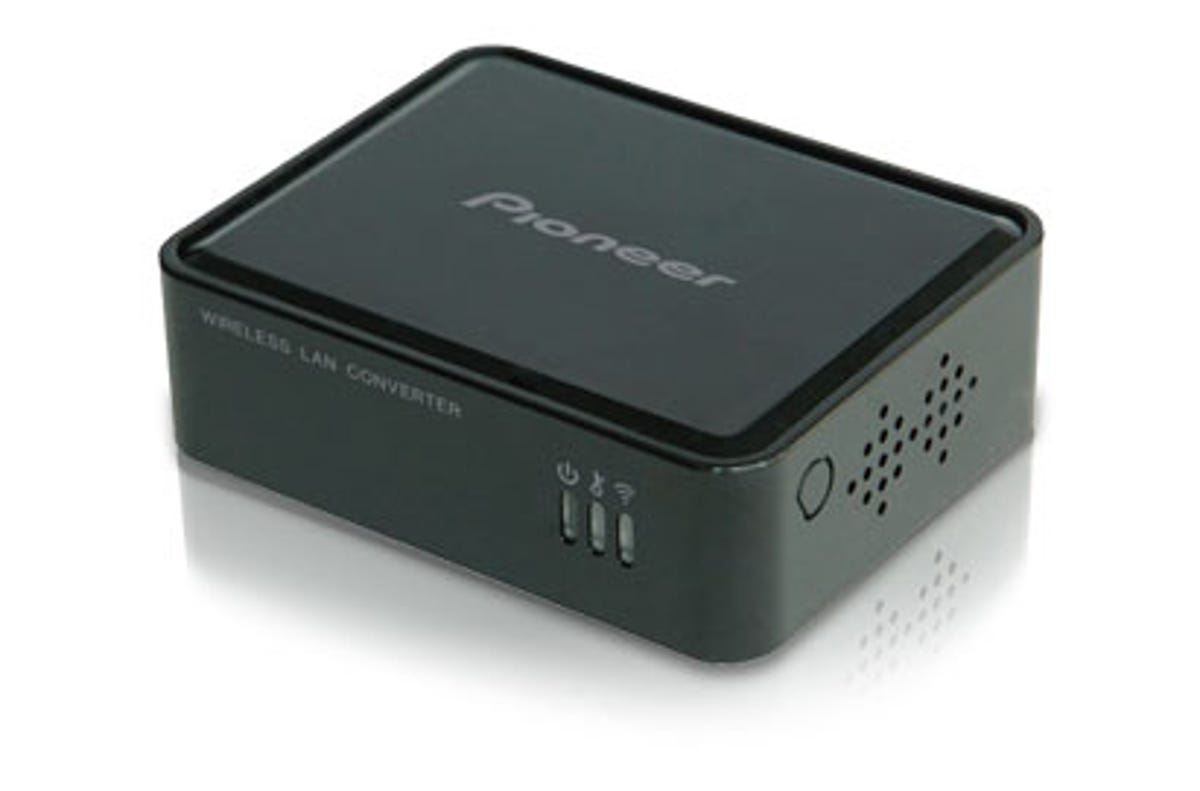

$130 for a Wi-Fi adapter? No thanks.
Pioneer
Even worse, the companies have the gall to try and soak you for accessories that add these features after you’ve already spent hundreds of dollars on a receiver. Look at prices for these wireless adapters that should have been included in the first place:
Pioneer AS-BT200: $100 Pioneer AS-WL300: $130 Yamaha YBA-11: $70 Yamaha YWA-10: $100
The lone standout is Onkyo, which reasonably prices its Wi-Fi and Bluetooth adapters at $30 and $50, respectively. And at least both Onkyo and Sony seem to have gotten the message and have recently included built-in Bluetooth and Wi-Fi for some of their receivers.
5. Include a true high-definition interface
If you fire up your brand-new $400 Pioneer VSX-823-K receiver for the first time to set it up, this will be the first screen you’re greeted with:
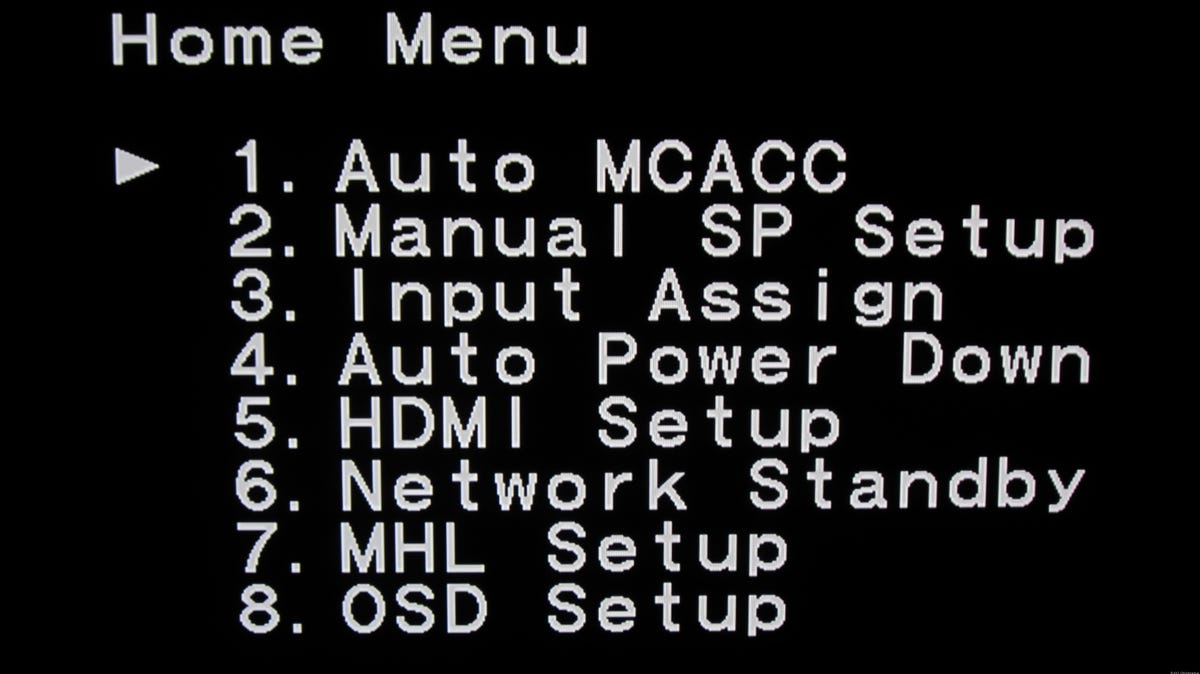

Pioneer VSX-823-K’s onscreen display
Matthew Moskovciak/CNET
How is that still acceptable? No other modern home theater device looks anything like that. Even the $50 Roku LT has a colorful, high-def interface. Granted, you don’t use the onscreen interface of an AV receiver that often, but it’s a bad experience right out of the box to be confronted with blocky text that harkens back to the MS-DOS days.
6. Make a usable remote
AV receiver remotes range from truly awful to barely acceptable. They’re typically covered with tiny buttons, confusingly labeled, with a haphazard layout that isn’t natural to navigate.
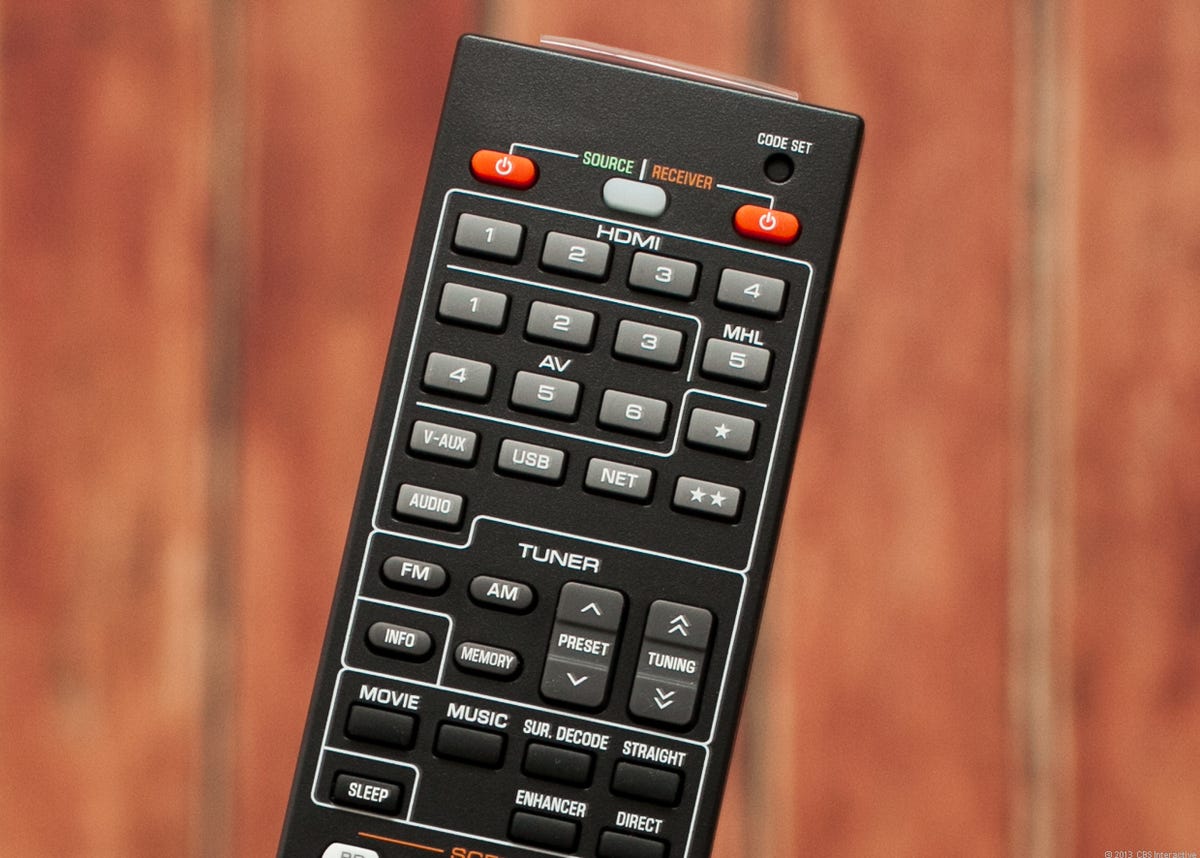

Sarah Tew/CNET
Take the remote included with the Yamaha RX-V475. There are two different power buttons at the top — bad start already. That’s followed by a grid of small, numbered buttons. If the “1” button is in the HDMI section, it selects the “HDMI 1” input…and you have to remember which device that is. There are also two “star” buttons, but no one could reasonably know what they stand for without diving into the manual. (“Change the external device to be controlled without switching the input source.”) And that’s just the top third of one company’s clicker.
There worst part is so many of these buttons are unnecessary. I’ve never needed a numpad on my receiver’s remote. Different sound modes like Movie and Music generally do more harm than good, and they could be toggled using an onscreen interface. The bottom line is AV receiver remotes need to be a lot simpler if they don’t want to be completely intimidating to anyone who’s not a home theater enthusiast.
7. Include speaker cables in the box
AV receiver manuals are thick, labyrinthine affairs, but they all gloss over one of the most basic steps in connecting your speakers: terminating speaker wire. They operate on the laughable assumption that every buyer is comfortable using a crimping tool and banana plugs, which is out of step in a world dominated by dead-simple connectors like HDMI and USB.
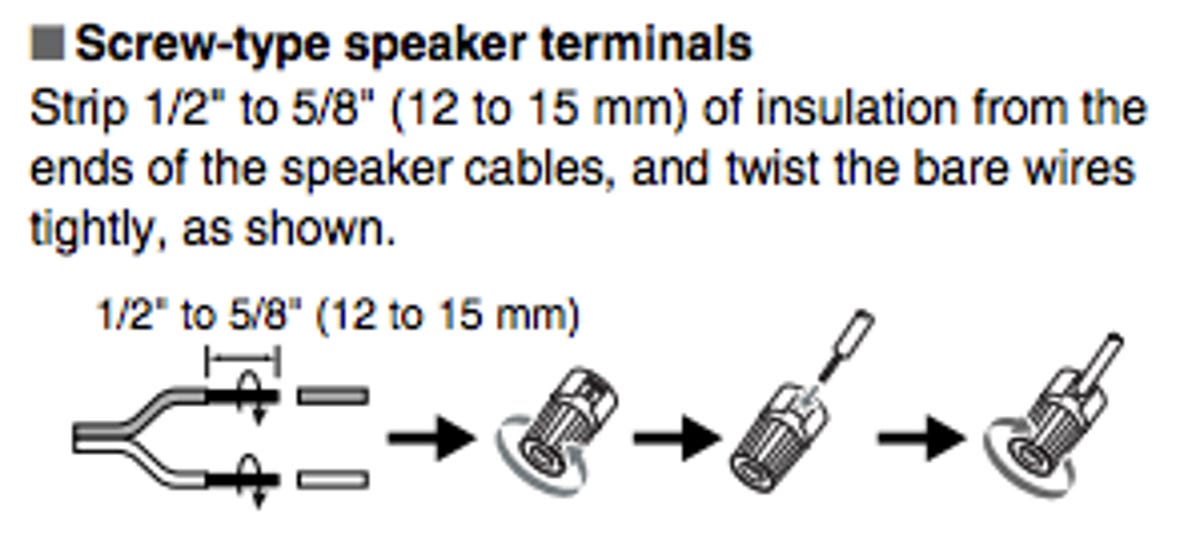

Onkyo’s TX-NR626 user manual casually asks you to strip the insulation from speaker wire, as if everyone knows how to do that.
Onkyo
The solution doesn’t seem that hard: include speaker wire in the box that’s already terminated with banana plugs (or pins), at least for the front speakers. Companies would need to do some market research to figure out a length that would work in the majority of setups, but there’s not that much variation for front speakers. This would add some cost, but it would make the experience much less intimidating for those new to home audio.
8. Embrace stereo
If you want a new AV receiver with basic features like HDMI connectivity, you’re pretty much forced to buy a 5.1 or 7.1 AV receiver, even if you intend to go with a two-channel setup. Manufacturers just don’t offer stereo AV receivers with modern features, which means many buyers are pushed to pay for a bunch of additional channels they’ll never use.
_rear.jpg?auto=webp&width=1200)
_rear.jpg?auto=webp&width=1200)
Most stereo receivers lack HDMI and other modern features.
Onkyo
AV receivers should embrace a return to stereo as the best defense against the rise of sound bars. A basic stereo system is only slightly more complicated than a sound bar, but it offers much better sound, especially for music.
More importantly, a return to stereo fixes so many of the problems plaguing current models. Scaling back to two channels of amplification, versus five or seven, would mean receivers can be smaller. Stereo also eliminates a lot of the need for extra features like automatic speaker calibration and additional surround-sound licensing.
That doesn’t mean multichannel receivers should go away, but there should be simpler, but modern, stereo options for those who don’t want to deal with surround sound.
The future is already here, sort of: Integrated amps
A lot of these fixes seem obvious and simple, but I’m doubtful there will be any changes to the ossified AV receiver market anytime soon.
But if there is a ray of home audio hope, it’s the handful of compact integrated amplifiers with digital inputs that have trickled out over the last few years. These small amps are limited to stereo, but that allows them to be dramatically smaller than a full-size AV receiver. They also tend to have few inputs, but, as sound bars have proven, you really only need a single digital input if you use your TV to switch between devices.
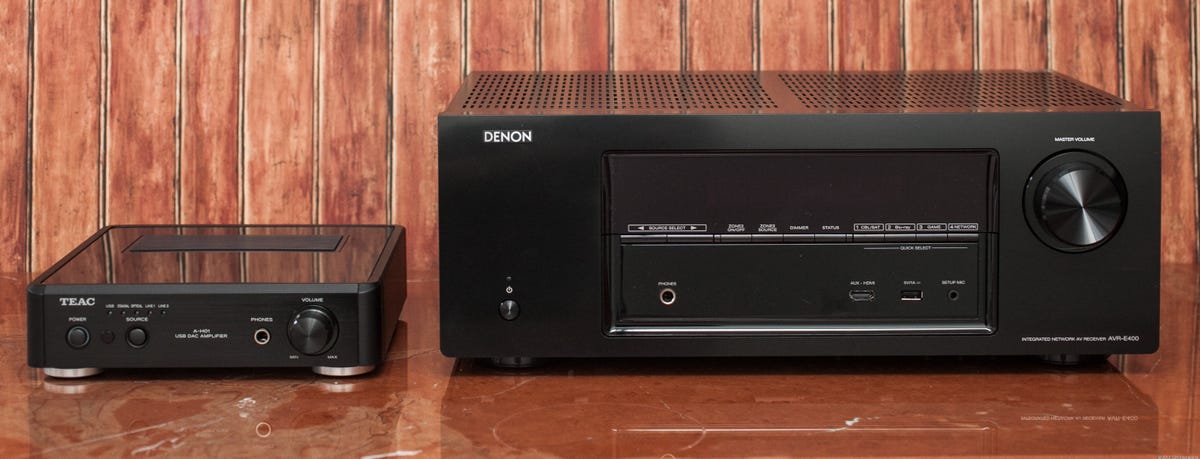

Teac’s A-H01 integrated amplifier (left) is a fraction of the size of a full-size receiver.
Sarah Tew/CNET
Compact integrated amplifiers aren’t the right choice for everyone, but for many buyers they’re a much better — and simpler — solution than a full-size AV receiver. In addition to many new 2013 AV receivers, CNET will be reviewing several small integrated amps over the next few weeks. The result, we hope, will be one or more products that we can recommend, for people who want something better than a sound bar without the bulk and frustration of an AV receiver.




